Dr. Martin Luther King Jr. might be the most recognizable name in American civil rights history. We celebrate this inspirational leader on the third Monday of January each year, but his life and legacy are valuable lessons all year long. Use these resources about Martin Luther King Jr. for kids to share his experiences and significance in your classroom or at home.
Don’t miss our free downloadable. Grab your full set of ready-to-go Martin Luther King Jr. for Kids Google Slides with all of the information below, including kid-friendly explanations, a timeline, and more.
Jump to:
- Biography
- Timeline
- Facts
- Quotes
- Videos
- Field Trips (In Person and Virtual)
- Worksheets, Activities, and Lesson Plans
- Books
Dr. Martin Luther King Jr. Biography for Kids
What is Dr. Martin Luther King Jr. known for?

Martin Luther King was a civil rights activist and leader in the 1950s and 1960s in the southern United States. He believed in nonviolent, peaceful protest as a means to fight racial injustice. Dr. King was a powerful speaker, delivering many speeches to inspire others to join the movement. He survived several attacks on his life but was assassinated in 1968 at age 39.
Where was Martin Luther King Jr. from?
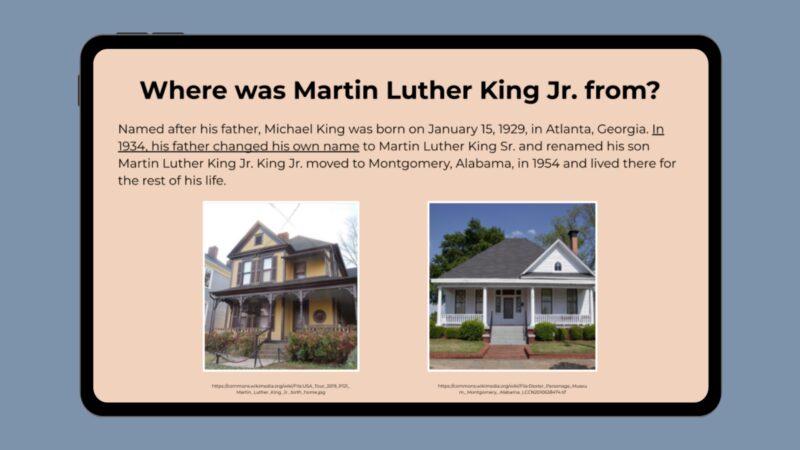
Named after his father, Michael King was born on January 15, 1929, in Atlanta, Georgia. In 1934, his father changed his own name to Martin Luther King Sr. and renamed his son Martin Luther King Jr. MLK Jr. moved to Montgomery, Alabama, in 1954 and lived there for the rest of his life.
Was Martin Luther King Jr. married?
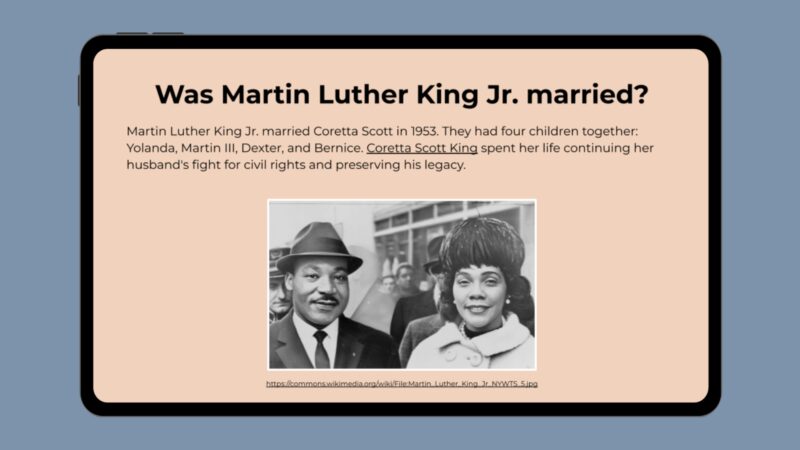
Martin Luther King Jr. married Coretta Scott in 1953. They had four children together: Yolanda, Martin III, Dexter, and Bernice. Coretta Scott King spent her life continuing her husband’s fight for civil rights and preserving his legacy.
How did Martin Luther King Jr. become involved in the Civil Rights Movement?
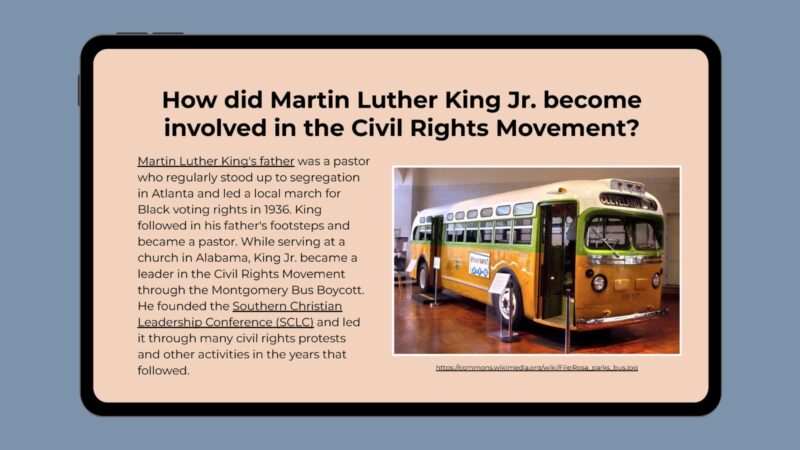
Martin Luther King’s father was a pastor who regularly stood up to segregation in Atlanta and led a local march for Black voting rights in 1936. King followed in his father’s footsteps and became a pastor. While serving at a church in Alabama, King Jr. became a leader in the Civil Rights Movement through the Montgomery Bus Boycott. He founded the Southern Christian Leadership Conference (SCLC) and led it through many civil rights protests and other activities in the years that followed.
Why did Martin Luther King Jr. believe in nonviolent protests?

King was well-known for insisting civil rights activists protest peacefully, even when met by violence from those opposed to their movement. During a trip to India in 1959, Dr. King learned about Mahatma Gandhi’s belief in nonviolent change. Other influences on Dr. King’s beliefs included Henry David Thoreau’s essay on civil disobedience.
Did Rosa Parks know Martin Luther King Jr.?
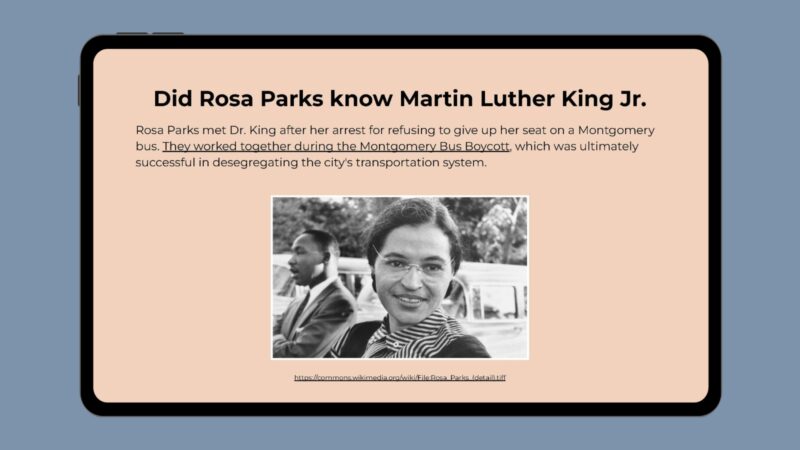
Rosa Parks met Dr. King after her arrest for refusing to give up her seat on a Montgomery bus. They worked together during the Montgomery Bus Boycott, which was ultimately successful in desegregating the city’s transportation system.
When did Martin Luther King Jr. give his “I Have a Dream” speech?

King gave his most famous speech during the 1963 March on Washington. More than 250,000 civil rights supporters were in the audience as he spoke from the steps of the Lincoln Memorial in Washington, D.C., on August 28.
How many times was Martin Luther King Jr. arrested?

Dr. King was arrested at least 29 times, often on trumped-up charges. In 1960, a court in Atlanta sentenced him to four months of hard labor. Then-presidential candidate John F. Kennedy intervened on his behalf and he was released.
Did Martin Luther King Jr. win the Nobel Peace Prize?

In 1964, Dr. Martin Luther King Jr. was awarded the Nobel Peace Prize “for his non-violent struggle for civil rights for the Afro-American population.” He accepted the award in the name of the thousands of people in the Civil Rights Movement, whom he called a “mighty army of love.”
When did Dr. Martin Luther King Jr. die?
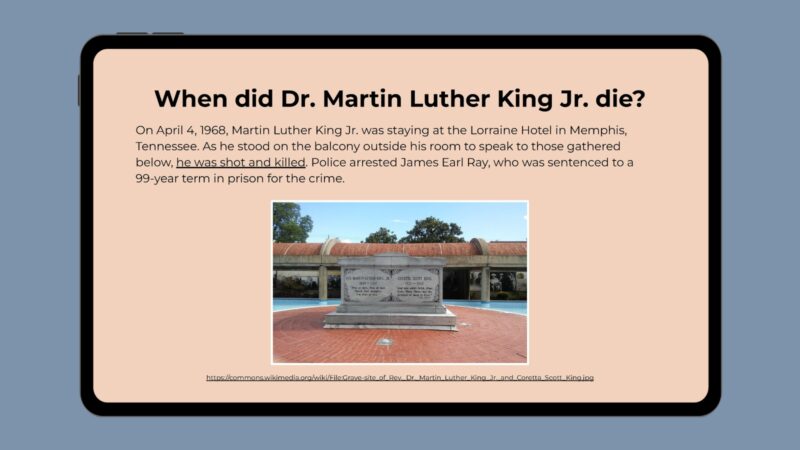
On April 4, 1968, Martin Luther King Jr. was staying at the Lorraine Hotel in Memphis, Tennessee. As he stood on the balcony outside his room to speak to those gathered below, he was shot and killed. Police arrested James Earl Ray, who was sentenced to a 99-year term in prison for the crime.
When is Martin Luther King Jr. Day held?
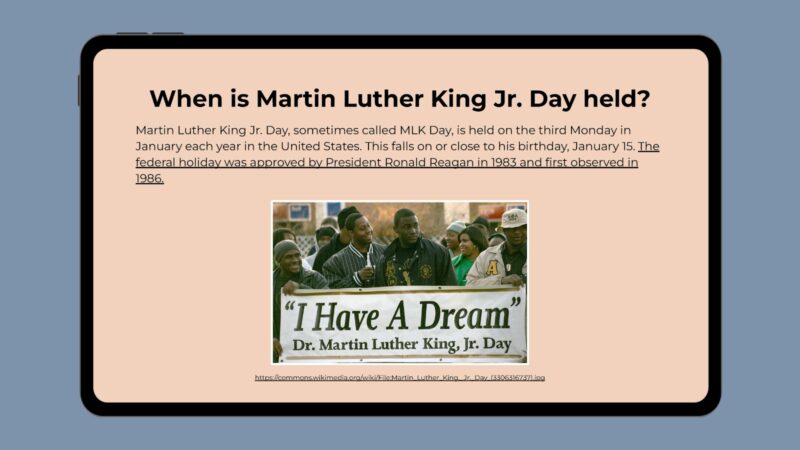
Martin Luther King Jr. Day, sometimes called MLK Day, is held on the third Monday in January each year in the United States. This falls on or close to his birthday, January 15. The federal holiday was approved by President Ronald Reagan in 1983 and first observed in 1986.
Is there a monument to Dr. Martin Luther King Jr. in the United States?
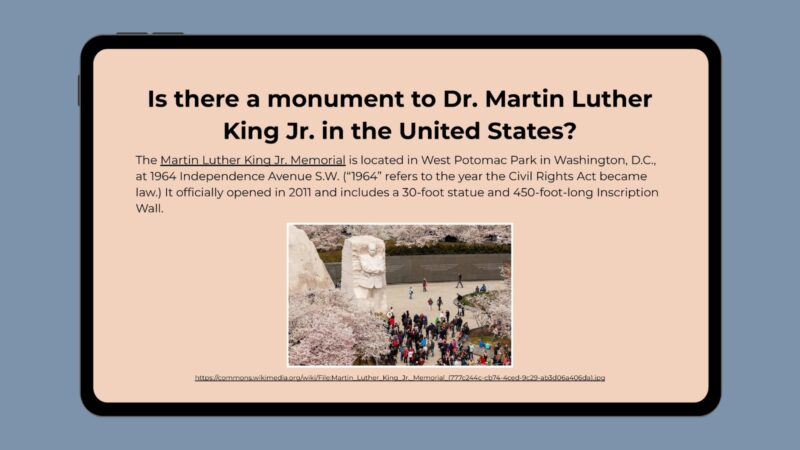
The Martin Luther King Jr. Memorial is located in West Potomac Park in Washington, D.C., at 1964 Independence Avenue S.W. (“1964” refers to the year the Civil Rights Act became law.) It officially opened in 2011 and includes a 30-foot statue and 450-foot-long Inscription Wall.
Martin Luther King Jr. Timeline
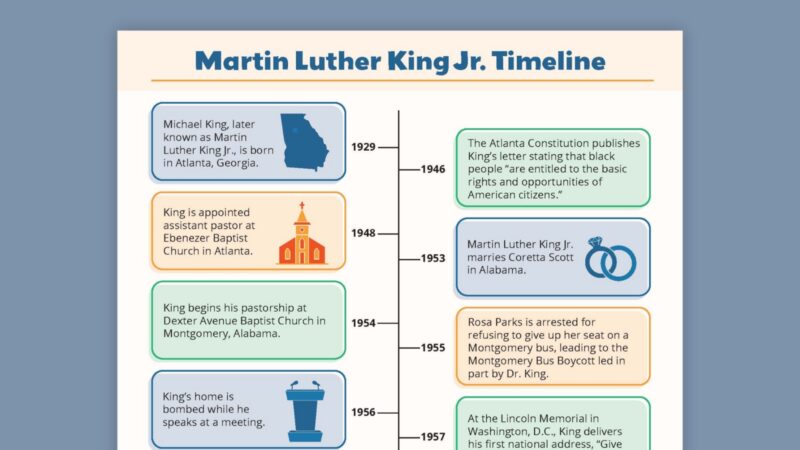
Here are some of the most important dates and events in Dr. King’s life. Find a more detailed MLK timeline here.
- January 15, 1929: Michael King, later known as Martin Luther King Jr., is born in Atlanta, Georgia.
- August 6, 1946: The Atlanta Constitution publishes King’s letter stating that black people “are entitled to the basic rights and opportunities of American citizens.”
- February 25, 1948: King is appointed assistant pastor at Ebenezer Baptist Church in Atlanta.
- June 18, 1953: Martin Luther King Jr. marries Coretta Scott in Alabama.
- September 1, 1954: King begins his pastorship at Dexter Avenue Baptist Church in Montgomery, Alabama.
- December 1, 1955: Rosa Parks is arrested for refusing to give up her seat on a Montgomery bus, leading to the Montgomery Bus Boycott led in part by Dr. King.
- January 30, 1956: King’s home is bombed while he speaks at a meeting.
- May 17, 1957: At the Lincoln Memorial in Washington, D.C., King delivers his first national address, “Give Us the Ballot.”
- September 20, 1958: During a book signing in Harlem, Izola Ware Curry stabs King with a letter opener. He survives the attack.
- April 16, 1963: King releases his famous “Letter From a Birmingham Jail.”
- August 28, 1963: King gives his “I Have a Dream Speech” as part of the March on Washington.
- December 10, 1964: Dr. King receives the Nobel Peace Prize.
- March 21-25, 1965: King and other civil rights activists lead a march from Selma to Montgomery, Alabama.
- April 4, 1968: Dr. Martin Luther King Jr. is shot and killed on the balcony of the Lorraine Motel in Memphis, Tennessee, at age 39.
Martin Luther King Jr. Facts
Martin wasn’t Martin Luther King Jr.’s real name.

Martin Luther King Jr. first experienced segregation at just six years old.
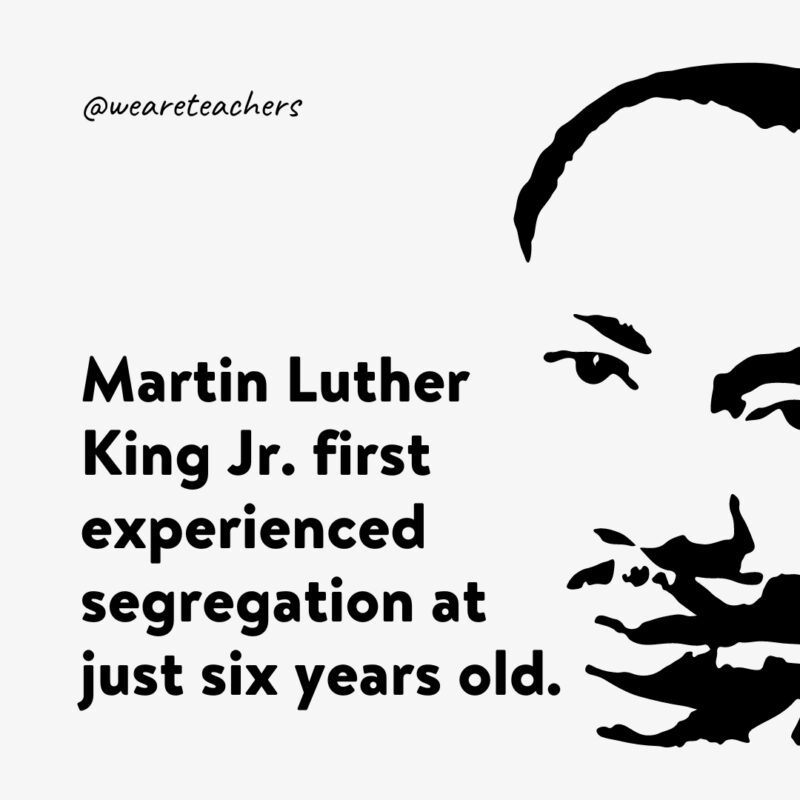
Martin Luther King Jr. was the youngest recipient of the Nobel Peace Prize.

MLK was the youngest recipient at the time he received the Nobel Peace Prize in 1964. Activist Malala Yousafzai holds that honor today.
Get More Facts: 17 Meaningful Martin Luther King Jr. Facts To Share in the Classroom
Dr. Martin Luther King Jr. Quotes
His ability to inspire others with powerful words was one of Dr. King’s greatest attributes. Here are a few of our favorite quotes.
“Darkness cannot drive out darkness; only light can do that. Hate cannot drive out hate; only love can do that.”
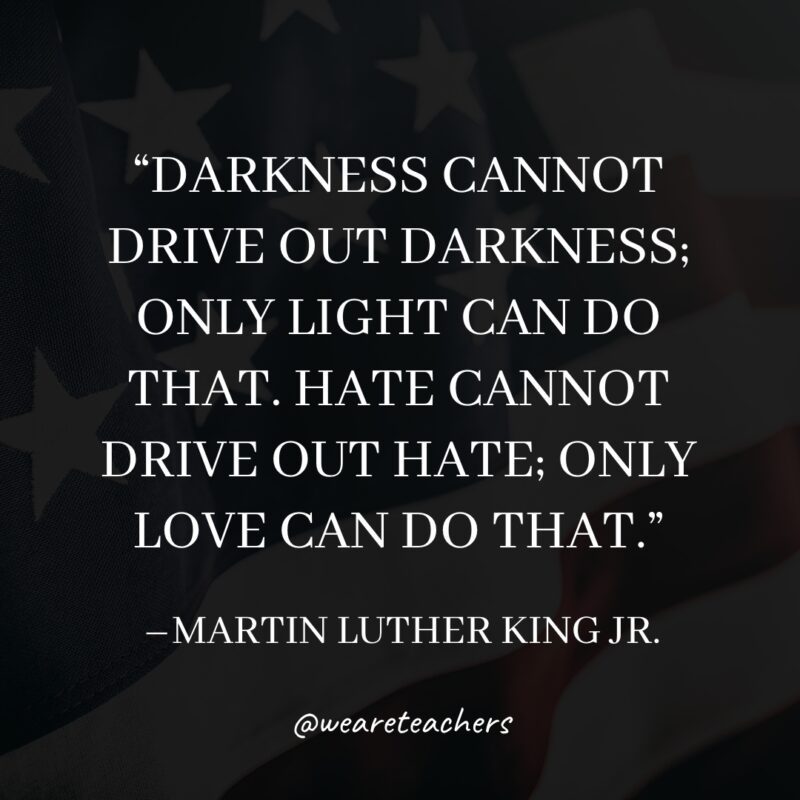
“Faith is taking the first step even when you don’t see the whole staircase.”
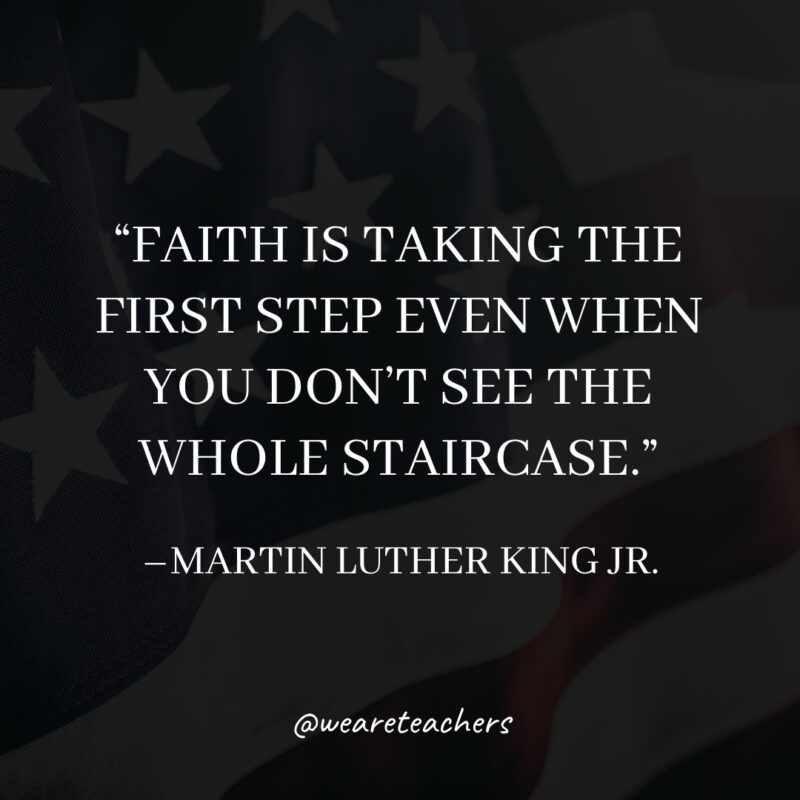
“Forgiveness is not an occasional act; it is a constant attitude.”

“Love is the only force capable of transforming an enemy to a friend.”
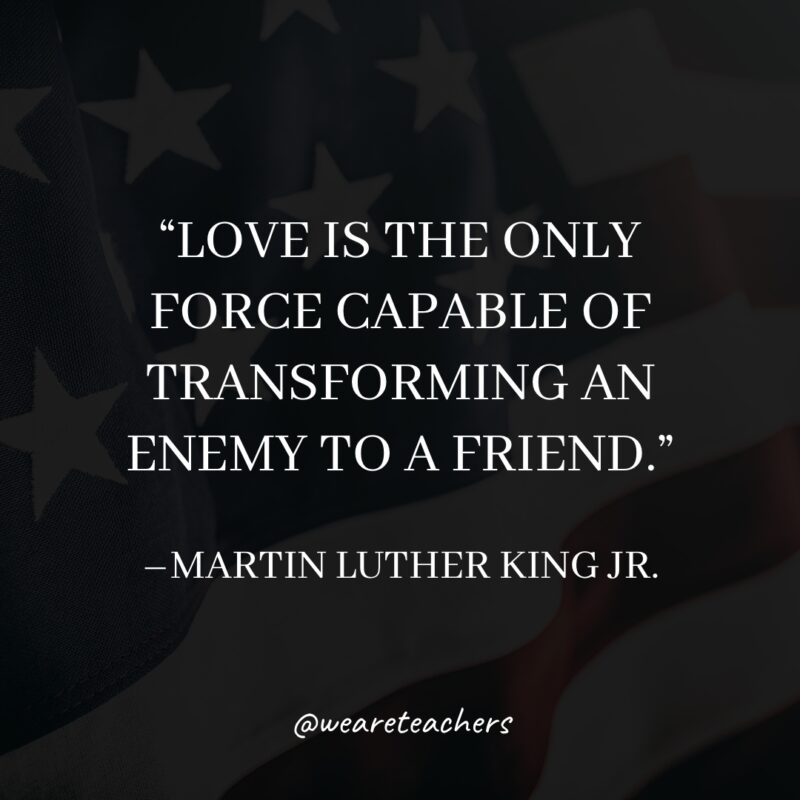
“Everybody can be great because everybody can serve.”
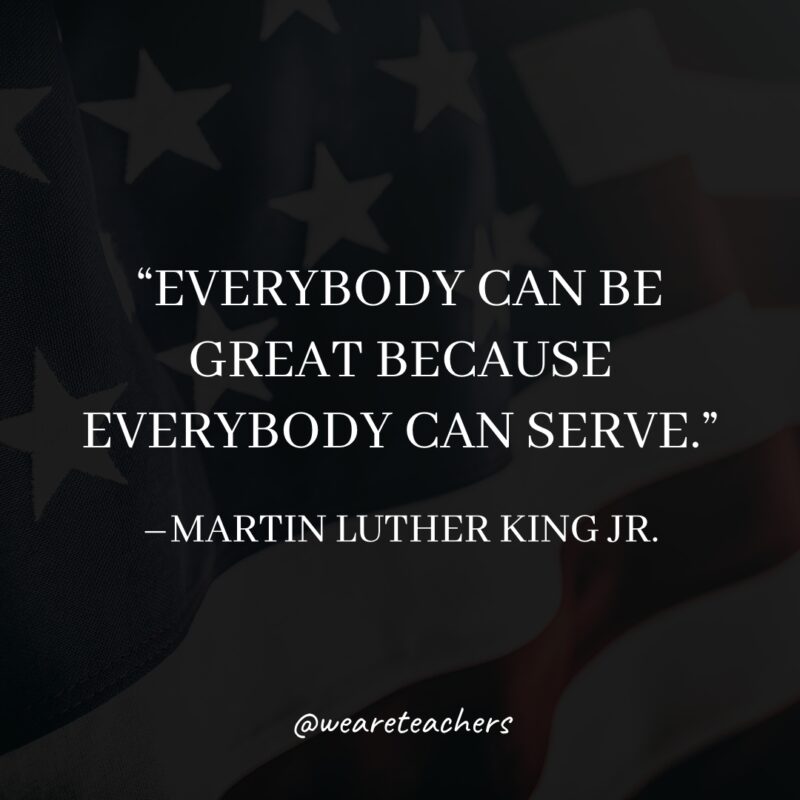
Get More Quotes: 105 Martin Luther King Jr. Quotes for the Classroom
Dr. Martin Luther King Jr. Videos for the Classroom
Learn about his life and hear him speak in these videos about Martin Luther King Jr. for kids and teens. (Please preview videos to ensure they’re appropriate for your intended audience.)
Sesame Street: Martin Luther King Jr. Day
Introduce the very youngest learners to Dr. King with this tribute from Sesame Street.
The Story of Martin Luther King Jr.
Give K-5 students more information with this overview of King’s life.
Martin Luther King Jr. | Biography
This general overview is good for most audiences, giving the basics of Dr. King’s life and influence.
Martin Luther King Jr.: The Fight for Civil Rights Documentary
High school students can get an in-depth look at Martin Luther King Jr.’s struggles for equal rights in this detailed doc.
Martin Luther King Jr.’s “I Have a Dream” Speech
There’s no substitute for hearing the great man himself give his most famous speech.
Martin Luther King Jr. Field Trips (In Person and Virtual)
A variety of sites across the country offer educational experiences related to Dr. King. If you can’t visit in person, you’ll also find video tours and virtual field trips to explore.
- Smithsonian Collection: Dr. Martin Luther King Jr. (Virtual)
- Martin Luther King, Jr. National Historical Park (Georgia)
- Martin Luther King, Jr. Memorial (Washington D.C.)
- The King Center (Atlanta, Georgia)
- National Civil Rights Museum at the Lorraine Hotel (Memphis, Tennessee)
- Civil Rights Memorial Center (Montgomery, Alabama)
Martin Luther King Jr. Worksheets, Activities, and Lesson Plans
Find engaging and purposeful ways to teach Martin Luther King Jr. for kids, from pre-K through high school, with these top resources.
Martin Luther King Jr. Day of Service
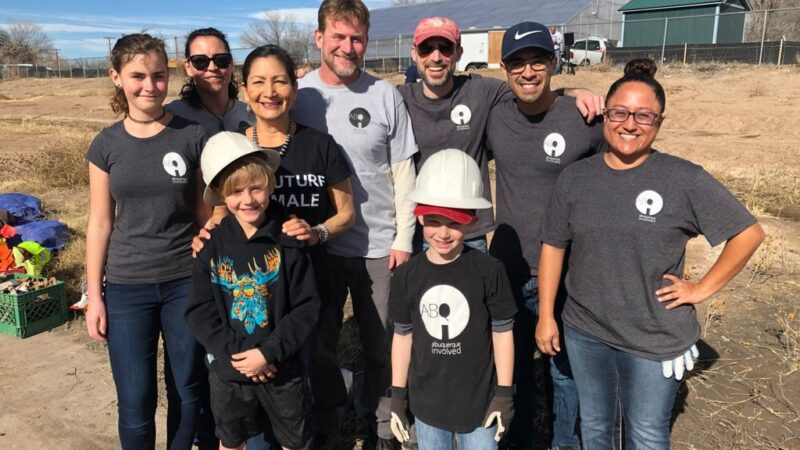
Each year, people across the country use the Martin Luther King Jr. Day holiday to give back to their communities. Organize a day of service with your students to join the movement.
Learn more: Martin Luther King Jr. Day of Service at U.S. Department of the Interior
Meaningful Martin Luther King Jr. Classroom Activities

Our roundup of Martin Luther King Jr. activities includes coloring pages, classroom lessons, school and community activities, and much more.
Try it: Meaningful Martin Luther King Jr. Activities for All Ages
Martin Luther King Jr. Worksheets
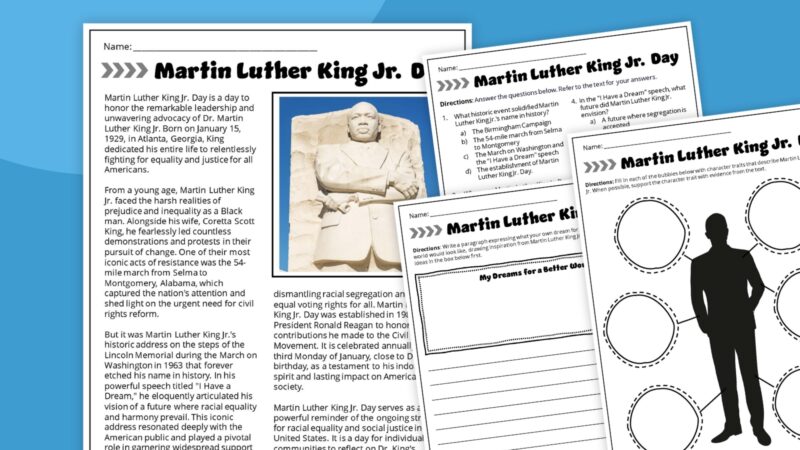
These free Martin Luther King Jr. worksheets include four printable pages, including a student handout, reading comprehension questions, a writing activity, and a graphic organizer.
Try it: Martin Luther King Jr. Worksheets at We Are Teachers
Martin Luther King Jr. Lesson Plans
For full lesson plans, check out:
- Learning and Living the Legacy of Martin Luther King, Jr. at NEA
- The March on Washington and Its Impact at PBS
- Martin Luther King Jr.’s “I Have a Dream” Speech as a Work of Literature at PBS
- Dr. Martin Luther King Jr.’s “I Have a Dream” Speech as Visual Text at PBS
- Music and Speeches at the March on Washington at PBS
- MLK Jr.’s “Letter From a Birmingham Jail” and the Capitol Hill Attack at PBS
- Dr. Martin Luther King, Jr.’s Legacy of Racial and Social Justice: A Curriculum for Empowerment at National Park Service
- Dr. King’s Dream at EDSITEment!
- Teaching About Martin Luther King Jr. at Civil Rights Teaching
- Teaching and Learning About Martin Luther King Jr. at The New York Times
Books About Dr. Martin Luther King Jr. for Kids and Teens
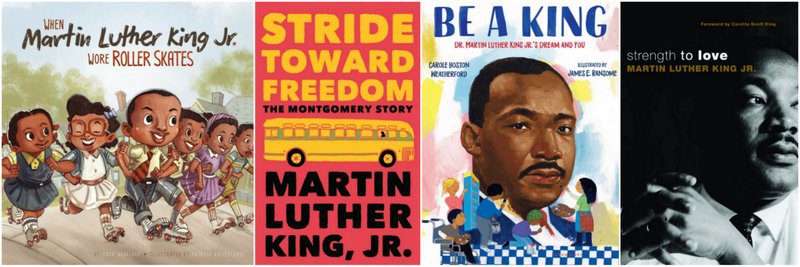
One of the best ways to teach Martin Luther King Jr. for kids is through the many amazing books about him. Take a look at these book lists we compiled:
Inspiring Martin Luther King Jr. Books for Kids of All Ages
Classroom Books for Teaching About Martin Luther King Jr.
Get Your Free Martin Luther King Jr. for Kids Google Slides

Just click the button below to fill out the form and get instant access to free downloadable Martin Luther King Jr. Google Slides with all the information included above, including kid-friendly explanations, a timeline, and more.

